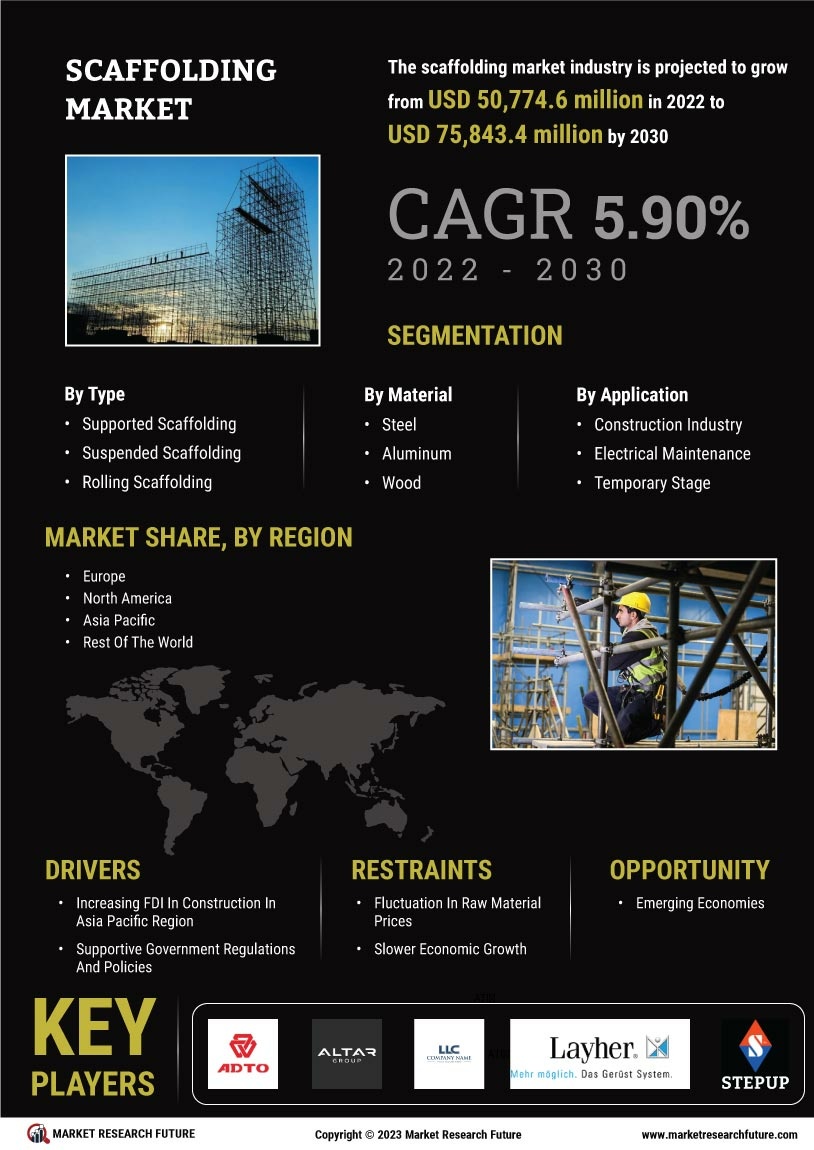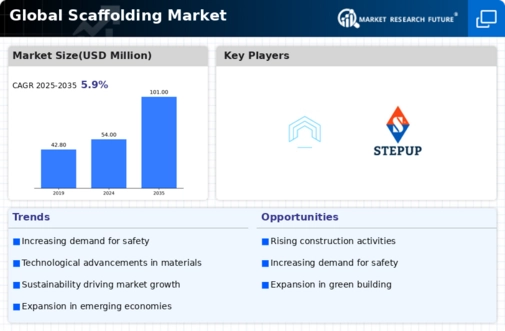Technological Innovations
Technological advancements are reshaping the Scaffolding Market, introducing new materials and designs that enhance safety and efficiency. Innovations such as modular scaffolding systems and lightweight materials are gaining traction, allowing for quicker assembly and disassembly. The integration of digital tools, such as Building Information Modeling (BIM), is also streamlining project management and scaffolding design. These advancements not only improve safety standards but also reduce labor costs and project timelines. As construction companies increasingly adopt these technologies, the Scaffolding Market is likely to witness a shift towards more efficient and sustainable practices.
Green Building Initiatives
The increasing focus on sustainability and green building practices is influencing the Scaffolding Market. As more construction projects aim for LEED certification and other sustainability benchmarks, there is a growing demand for eco-friendly scaffolding solutions. This includes the use of recyclable materials and energy-efficient designs. The market for green building materials is projected to grow significantly, with scaffolding being a key component in achieving these goals. Consequently, the Scaffolding Market is likely to adapt to these trends, offering products that align with environmental standards and appeal to eco-conscious developers.
Infrastructure Development
The ongoing expansion of infrastructure projects is a primary driver for the Scaffolding Market. Governments and private entities are investing heavily in the construction of roads, bridges, and public transport systems. For instance, the construction sector is projected to grow at a rate of 4.5% annually, leading to increased demand for scaffolding solutions. This growth is fueled by urbanization and the need for modernized infrastructure, which necessitates the use of scaffolding for safety and efficiency during construction. As a result, the Scaffolding Market is likely to experience a surge in demand, particularly in regions where infrastructure is being prioritized.
Residential Construction Boom
The resurgence in residential construction is significantly impacting the Scaffolding Market. With a growing population and increasing urbanization, there is a heightened demand for housing. In recent years, the residential construction sector has seen a compound annual growth rate of approximately 5%. This trend is expected to continue, as more developers seek to meet the housing needs of expanding urban areas. Scaffolding Market plays a crucial role in residential projects, providing essential support and safety for workers. Consequently, the Scaffolding Market is poised for growth as more residential projects are initiated.
Safety Regulations and Standards
The enforcement of stringent safety regulations is a critical driver for the Scaffolding Market. Regulatory bodies are continuously updating safety standards to ensure worker protection on construction sites. Compliance with these regulations often necessitates the use of high-quality scaffolding systems that meet specific safety criteria. As a result, construction companies are investing in advanced scaffolding solutions to adhere to these regulations, which is expected to boost the market. The emphasis on safety not only protects workers but also enhances the reputation of construction firms, further driving demand within the Scaffolding Market.


















Leave a Comment